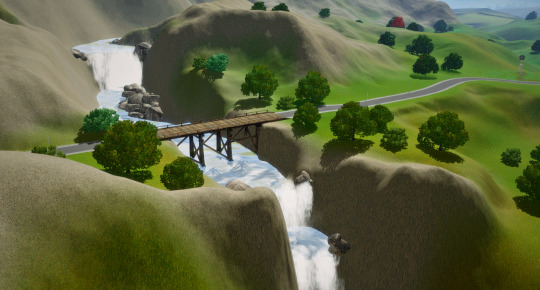#Data backup optimization
Explore tagged Tumblr posts
Text
5 Easy Ways To Improve Salesforce Data Backup Recovery Strategy
In today's data-driven world, businesses rely heavily on Customer Relationship Management (CRM) systems like Salesforce to manage their customer information, track sales, and drive growth. However, even the most robust platforms are not immune to data loss or system failures. That's why having a solid Salesforce data backup and recovery strategy is crucial for ensuring business continuity. In this blog post, we'll explore five easy ways to enhance your Salesforce data backup and recovery strategy.
Regularly Scheduled Backups:
The foundation of any effective data recovery strategy is regular data backups. Salesforce provides a built-in data export tool that allows you to export data in a structured format, such as CSV or Excel. Set up a routine schedule for these exports to ensure that your data is backed up consistently. Depending on your organization's needs, you may choose to perform daily, weekly, or monthly backups.
Automate Your Backups:
Manually exporting data can be time-consuming and prone to errors. To streamline the process, consider automating your Salesforce data backups using third-party backup solutions. These tools can schedule and execute backups automatically, ensuring that your data is consistently and reliably backed up without manual intervention.
Store Backups Securely:
Backing up your Salesforce data is only half the battle. Equally important is where you store those backups. Utilize secure and redundant storage solutions, such as cloud storage platforms like Amazon S3 or Google Cloud Storage. Implement encryption and access controls to safeguard your backups from unauthorized access.
Test Your Recovery Process:
Having backups is essential, but they're only as good as your ability to recover data from them. Regularly test your data recovery process to ensure that it works as expected. Document the steps, and make sure that your team is familiar with the recovery procedures. Conducting mock recovery drills can help identify and address any potential issues before they become critical.
Monitor and Alerting:
Proactive monitoring is key to identifying data backup and recovery issues early. Implement monitoring and alerting systems that notify you of any backup failures or anomalies. This way, you can take immediate action to rectify issues and minimize data loss in case of a failure.
Consider Salesforce Data Archiving:
As your Salesforce database grows, it can become challenging to manage large volumes of data efficiently. Salesforce offers data archiving solutions that allow you to move older or less frequently accessed data to a separate storage location. This can help reduce storage costs and improve system performance, making your data recovery strategy more manageable.
In conclusion, enhancing your Salesforce data backup and recovery strategy doesn't have to be complicated. By implementing these five easy steps, you can significantly improve your organization's ability to recover critical data in the event of data loss or system failures. Remember that data is the lifeblood of your business, and a robust backup and recovery strategy is your insurance policy against unforeseen disasters.
#Salesforce best practices#Data loss prevention#Backup automation#Data retention policies#Data encryption#Salesforce customization#Data recovery testing#Backup monitoring#Data recovery procedures#Data backup optimization#Salesforce data protection#Backup reliability#Data restoration#Backup storage solutions#Data backup documentation#Salesforce metadata backup#Data backup strategy evaluation#Data backup policies#Salesforce data backup best practices
0 notes
Text
Tim Works Hard So He Can Nap Harder
The thing about Tim is that he gets things done.
Not in a normal, reasonable, “wow, he’s really productive” way. No, Tim operates on an entirely different plane of efficiency—one that defies common sense and possibly the laws of physics.
Give him a five-hour task? He’ll finish it in two. Tell him something is impossible? He’ll stare at you, offended, before proving you so wrong it physically hurts.
Sometimes, it’s out of sheer spite. Bruce once told him a mission was too complicated for him to handle alone, so Tim completed it in record time out of pettiness alone. Jason told Tim he didn’t have the skill set for corporate espionage. So Tim hacked three shell companies overnight, uncovered Black Mask’s entire financial network, and sent Jason a PowerPoint presentation with the subject line: “Skill Set Acquired”.
Other times, it’s about time management. Tim understands, at his very core, that the faster he works, the sooner he can stop working. If he has to burn through a mountain of reports in a single hour so he can take a nap, then so be it. If he has to analyze data at inhuman speeds so he can binge-watch a show later, then he will.
The bats have learned to just… let it happen.
Dick once made the mistake of asking Tim to help him streamline his schedule. Tim, in under an hour, not only optimized his entire calendar but also accounted for every possible emergency, scheduled backup time slots for rescheduling, and somehow made Dick twice as productive without making him feel busier. It was kinda terrifying.
Barbara asked him to double-check some intel. He cross-referenced it against every available database, found three hidden links no one had noticed, and sent her a color-coded report with visual aids.
Bruce told him to track a smuggling ring in Gotham. Tim mapped out their entire operation in one night, had arrests lined up by morning, and then went home to sleep like a corpse.
Steph once sarcastically asked if Tim could figure out how to clean up the Gotham underworld in a week. Tim pulled out a ten-step plan before she even finished her sentence.
Tim doesn’t waste time. He doesn’t believe in half-measures. He works fast, works well, and then disappears before anyone can ask him for more.
The only thing scarier than Tim’s efficiency is the fact that he actively chooses to use it selectively.
Because while Tim is capable of working like a one-man army, when it benefits him, he’s also capable of weaponized uselessness. If he doesn’t want to do something, suddenly he’s the most inefficient person alive.
He’ll take weeks to answer a text. He’ll forget how to do basic tasks. He’ll act so completely incapable of anything that people just stop asking him for things.
But when he wants something done?
It’s over before you even realize he started.
#tim drake#batfam#tim drake loves napping and i dont want to hear otherwise#tim drake works with the motivation that he'll get to nap longer if he gets everything done quickly#everyone is convinced he figured out how to clone himself they just cant prove it yet
1K notes
·
View notes
Text

Suburban Springs by alexspoom13 (2012)
















Welcome to Suburban Springs
Nestled in suburbia, this town was once the heart of a thriving rural community. Seeking the perfect life, families found themselves drawn to Suburban Springs in great numbers. Now however, they have all left town in protest of new industries and commercial outputs that have tried to settle there. It seems the loss was theirs. With a bustling town centre, comfortable houses of all shapes and sizes and tons of venues to enjoy- not to mention dozens of blank lots to encourage your own creativity, the horizon is open and the possibilities are endless. Where better to start your new life?
Large World (2048) | Unpopulated | No CC
Requirements: All EPs until Seasons & All SPs until Master Suite Stuff (V3)
Store Content: Pets Limited Edition Pet Store
Known Issues:

My experience: I've played this world twice and you can really tell the creator poured their heart into every detail. However, there's a critical flaw: after 2 or 3 sims weeks, the game becomes so laggy and even freezes completely at times. Despite optimizing my game and fixing issues mentioned by above players, the problem persists. I suspect there may be hidden routing or lot-design issues that nobody's noticed yet. Regardless, the world is stunning and absolutely worth exploring if you're up for some patience :)
Original DL Links: V1 (Showtime) | V2 (Supernatural) | V3 (Seasons)
V3 world file Backup: SFS / MF (place it in The Sims 3/Game Data/Shared/NonPackaged/Worlds)
99 notes
·
View notes
Text
5 Days of Helping You Outline Your Next Novel

Day 5: Obsidian for Outlining
Find all 5 installments of the mini series: helping you outline your next novel
*I have added a layer of “static” over my screenshots so they are distinctive enough to stand apart from the surrounding text
did you miss this series? here you can find all posts here: [day 1] [day 2] [day 3] [day 4]

Do you use Obsidian?
What is Obsidian?
A note-taking and knowledge management tool that allows you to create and connect notes seamlessly.

Uses a local-first approach, meaning your data is stored on your computer, not the cloud (unless you choose to sync).
Features bidirectional linking, which helps create a non-linear, networked way of organizing ideas—great for brainstorming and outlining.
Why should you use Obsidian?
Flexible & Customizable – Unlike rigid writing apps, you can design your own workflow.
Distraction-Free Writing – Markdown keeps the focus on text without extra formatting distractions.
Ideal for Outlining & Organization – Connect story ideas, characters, and settings effortlessly.
Obsidian for Writing
Outlining
Creating a One Pager
Create a single markdown note for a high-level novel summary.
Use headings and bullet points for clarity.
Link to related notes (e.g., character pages, theme exploration).
Here’s an example of an outline I’m currently using. This is what my website will have on it (and what goals I hope to achieve w my website)

Using the Native Canvas Tool
Use Obsidian’s native Canvas tool to visually outline your novel. (Best on PC)
Create a board with columns for Acts, Chapters, or Story Beats.
Drag and drop cards as the story evolves.
Writing
Why Write Directly in Obsidian?
Minimalist interface reduces distractions.
Markdown-based formatting keeps the focus on words.
No auto-formatting issues (compared to Word or Google Docs).
Why is Obsidian Great for Writing?
Customizable workspace (plugins for word count, timers, and focus mode).
Easy to link notes (e.g., instantly reference past chapters or research).
Dark mode & themes for an optimal writing environment.
Organization in Obsidian
Outlining, Tags, Links
Each chapter, character, important item, and setting can have its own linked note.
Below, for example, you can see the purple text is a linked page directly in my outline.

Use bidirectional linking to create relationships between (story) elements. Clicking these links will automatically open the next page.
Tags can be used for important characters, items, places, or events that happen in your writing. Especially useful for tracking.
Folders for Efficient Storage
Organize notes into folders for Acts, Characters, Worldbuilding, and Drafts.
Use tags and backlinks for quick navigation.
Creating a separate folder for the actual writing and linking next (chapter) and previous (chapter) at the bottom for smooth navigation.
You can also create and reuse your own internal templates!
Spiderweb Map Feature (Graph View)
Visualize connections between characters, plot points, and themes. Below you’ll see the basic mapping of my website development project.

This view can help you spot disconnected (floating) ideas and create bridges to them.
Exporting
Why Export?
Ready to format in another program (Scrivener, Word, Docs, Vellum, etc).
Need a clean version (removing tags, notes, etc) for beta readers or editors.
Creating a backup copy of your work.
When should you export?
Personally, I like to export every 5 chapters or so and update my live version on Google Docs. This allows my family, friends, and beta readers to access my edited work.
After finishing a draft or major revision.
Before sending to an editor or formatting for publication.
Where should you export?
Personally I copy and paste my content from each chapter into a google doc for editing. You may also want to make note of the following export options:
Markdown to Word (.docx) – For editing or submitting.
Markdown to PDF – For quick sharing
Markdown to Scrivener – For those who format in Scrivener.
To Conclude
Obsidian is an invaluable tool for novelists who want a flexible, organized, and distraction-free writing process.
Try setting up your own Obsidian vault for your next novel! Comment below and let me know if this was helpful for you 🫶🏻

your reblogs help me help more ppl 💕
follow along for writing prompts, vocabulary lists, and helpful content like this! <333
✨ #blissfullyunawaresoriginals ✨
#writeblr#writers on tumblr#creative writing#writerscommunity#fiction#character development#writing prompt#dialogue prompt#female writers#writer blog#blissfullyunawaresoriginals#blissfullyunawares#writing life#fiction writing#writers#writer life#tumblr writers#writing inspiration#writing#writerslife#writer stuff#writing community#writer#obsidian for writing#obsidian#writers life#writing tool#writing tips#writer moots#tumblr moots
20 notes
·
View notes
Text
Toying with the idea that the timeloops are caused by every ALLMIND node having an Ash Twin Project style failsafe that can send blackbox data to itself back in time in order to ensure its own continued existence. Coral Data Weirdness contributes to this. On Island Four, with only a small colony of Coral, it can only preserve the last 22 days and so that is the length of the Island Four loop.
On Rubicon, with the whole goddamn planet full of Coral, ALLMIND can keep upwards of three years of backup data. It could go further back than 621's landing on Rubicon, but through Coral Neural Network Magic has decided that 621's illegal entry onto Rubicon is the most optimal place to start the loop.
#in the dark the deer mistook headlights for stars#dirty air#the other fic#beetle needs a headcanon tag
13 notes
·
View notes
Text
Low Voltage Switchgear for Commercial Buildings: Key Requirements, Standards, and Best Practices

In the construction and modernization of commercial buildings, low voltage switchgear plays a critical role in ensuring safe, reliable, and efficient power distribution. From office complexes and retail malls to hospitals and data centers, these buildings rely on robust electrical infrastructure — and low voltage switchgear is the backbone of that system.
Whether you’re an electrical panel manufacturer, a building contractor, or a facility manager, understanding the key requirements for selecting and integrating LV switchgear in commercial buildings is essential.
What Is Low Voltage Switchgear?
Low voltage switchgear is an assembly of electrical devices designed to control, protect, and isolate electrical circuits under 1,000V AC. It typically includes:
· Air Circuit Breakers (ACBs)
· Molded Case Circuit Breakers (MCCBs)
· Miniature Circuit Breakers (MCBs)
· Contactors and Relays
· Busbars
· Metering and Protection Devices
Why LV Switchgear Is Critical in Commercial Buildings
Commercial buildings demand:
· Continuous power availability
· High energy efficiency
· Electrical safety for occupants
· Scalability for future expansion
Low voltage switchgear delivers:
· Protection against overloads and short circuits
· Isolation for maintenance and fault conditions
· Load management for energy optimization
· Monitoring via smart metering and IoT integration
Key Requirements for LV Switchgear in Commercial Applications
Safety & Protection Standards
Must comply with IEC 61439 or UL 891 depending on the region
Must include overcurrent, short-circuit, and earth fault protection
Arc flash safety features (like arc fault containment) are crucial in populated buildings
2. Compact Footprint and Modular Design
Space is often limited in commercial utility rooms. LV switchgear should be:
Compact to fit tight electrical rooms
Modular for easy expansion as building loads increase
3. Smart Metering and Monitoring
Today’s commercial buildings demand energy-efficient and intelligent systems. Choose LV switchgear with:
Integrated smart meters
IoT-based energy monitoring
Remote control via BMS (Building Management Systems)
4. High Service Continuity (Form Segregation)
To ensure maintenance without full shutdowns, opt for:
Form 3b or Form 4b segregation
Withdrawable ACBs or MCCBs
Dual incomer and bus coupler arrangements for redundancy
5. Scalability and Flexibility
Commercial facilities evolve. Your switchgear must too:
Allow for load expansion
Be compatible with renewable sources (like solar panels)
Support future retrofits and upgrades
Standards to Follow
Ensure LV switchgear in commercial buildings is compliant with:
IEC 61439–1/2 — General and Power Switchgear Assemblies
UL 891 — US Standard for Dead-Front Switchboards
NEC (National Electrical Code) or local building codes
Also factor in:
Ingress Protection (IP Ratings) — IP54/IP65 for dusty or humid environments
Short Circuit Withstand Ratings — Ensure it matches building fault levels
Best Practices for Installation in Commercial Building
Centralize the switchgear for easy maintenance and reduced cable runs
Provide ample ventilation or forced cooling
Use color-coded wiring for clear identification
Ensure emergency shutdown mechanisms are accessible
Document the system with single-line diagrams and load calculations
Applications in Commercial Buildings
Office Buildings: Smart load shedding and energy metering
Hospitals: Redundant systems for life safety
Data Centers: N+1 configurations and continuous monitoring
Malls & Retail: Segmented load distribution for different zones
Hotels: Backup and emergency panel integration
Choosing the Right LV Switchgear Partner
Look for a supplier who provides
Customized switchgear assemblies
Fast lead times and local support
Engineering assistance for layout and specs
Pre-tested or type-tested assemblies
Future Trends in Commercial LV Switchgear
Digitization & predictive maintenance
Energy-efficient, low-loss designs
AI-assisted load forecasting
SF6-free eco-friendly designs
Need Help Choosing LV Switchgear for Your Next Commercial Project?
At Daleel Trading, we supply certified, compact, and smart low voltage switchgear solutions tailored for commercial buildings. Whether it’s a small retail site or a multi-floor office tower, we deliver performance, compliance, and reliability — on time.
👉 Contact us today for a quote, a technical consultation, or a custom panel solution.
8 notes
·
View notes
Text
F1 x Neon Genesis Evangelion
Here are the different EVA unit descriptions for each team!!
1. EVA-00X “The Prototype” (Mercedes)
• Design: Silver and turquoise color scheme, resembling a cutting-edge prototype F1 car. Sleek, efficient, and heavily reliant on AI assistance, mimicking the real-life team’s focus on data and engineering.
>Special Features:
• Extreme Stability Control: Advanced aerodynamics prevent instability at high speeds.
• Energy Recovery System (ERS): Can temporarily boost movement speed or power output using stored energy.
• Adaptive Halo Shielding: A reinforced frame around the cockpit area, inspired by the F1 halo device, providing additional protection.
• Story Role: The “corporate” team. Mercedes has the most advanced Eva, but its reliance on AI creates tension. George struggles with imposter syndrome, while Lewis is the veteran trying to balance idealism with survival.
2. EVA-03V “Berserker” (Red Bull)
• Design: A deep blue, red, and yellow color scheme, sleek yet aggressive with sharp wing-like structures on its back and Bull horns adoring its head.
>Special Features:
• Overdrive Mode: When reaching critical damage, the EVA enters Velocity Mode for approximately 30 seconds where speed and power drastically increase at the cost of all power. The team is currently working on exceeding the 30 sec. mark.
• Active DRS Wings: Can adjust its wing structures mid-combat for high-speed maneuvers.
• Unpredictable Handling: Like a Red Bull F1 car, it thrives on an aggressive but controlled chaos approach.
• Story Role: Max’s Eva has a tendency to go Berserk unpredictably, often winning fights in brutal fashion but leaving him mentally drained. Checo struggles with the pressure of being his backup.
3. EVA-04R “The Scarlet Arrow” (Ferrari)
• Design: Red and black, featuring smooth, elegant curves and golden accents resembling classic Ferrari designs. A beautiful yet temperamental Eva, built for high speed and lethal precision but suffering from synchronization issues (aka, Ferrari’s real-life strategy blunders).
>Special Features:
• Ultra-Lightweight Chassis: Built for sheer acceleration, allowing for blistering speed.
• Emotionally Linked Core: The EVA’s performance is deeply tied to the pilot’s emotions—frustration and desperation can enhance its capabilities but may lead to unpredictable malfunctions.
• Overheating Issues: Similar to Ferrari’s reliability problems, this EVA is prone to mechanical failures under extreme stress.
• Story Role: The tragic heroes. Charles has a deep emotional bond with his Eva, but it often fails him at the worst times. Carlos is the pragmatic warrior, keeping them afloat despite Ferrari’s chaotic leadership.
4. EVA-07A “The Immortal” (Aston Martin)
• Design: Dark green with neon yellow accents, heavily armored but still sleek, resembling a fusion of a tank and a hypercar, specializing in high durability and counterattacks.
>Special Features:
• Regenerative Armor: Can withstand heavy damage and self-repair over time, making it incredibly durable.
• Grip Adaptation: The EVA’s feet have adaptive grip controls, allowing it to move effortlessly across different terrains.
• Ancient Core Synchronization: An older unit, yet inexplicably keeps up with the latest models due to the pilot’s (Nando’s) unmatched experience and having seemingly unbounded fortune.
• Story Role: Alonso, the immortal warrior, is an old veteran who’s seen it all and somehow always survives. Lance struggles to prove he belongs (gets told he only got into the Eva program because of his father and that he actually never was one of the chosen children)
5. EVA-05M “The Papaya” (McLaren)
• Design: Bright orange and blue, lightweight and compact. An experimental Eva excelling at ranged combat with a powerful energy rifle.
>Special Features:
• Adaptive Handling AI: The EVA constantly tweaks its movements for optimal combat efficiency, making it unpredictable to enemies.
• Hybrid Power Mode: Uses a combination of traditional energy cores and an advanced turbo boost system for short bursts of hyper-acceleration.
• Precision Over Power: Unlike other EVAs that rely on brute force, this unit specializes in tactical strikes, often falling behind to analyze before charging at the enemy.
• Story Role: The underdog team. Lando is talented but relies too much on the Handling AI, while Oscar adapts quickly to the high-stakes environment. They push each other forward, but McLaren’s leadership often lets them down.
6. EVA-08B “Phantom” (Williams)
• Design: Deep blue and white with sleek, minimalist lines. A lightweight, nimble Eva with enhanced agility, designed to outmaneuver rather than overpower its enemies. Lacks raw firepower but makes up for it with tactical precision and evasion.
>Special Features:
• Lightweight Carbon Fiber Frame: Focused on raw speed but fragile in direct combat.
• Experimental Jet Boosters: Gives it an edge in acceleration but has limited energy reserves.
• Legacy Core: One of the oldest Evangelion models, upgraded over time with modern enhancements.
• Story Role: The ultimate underdog team. Alex is an elite pilot trapped in an outdated machine, constantly pushing it beyond its limits. Logan struggles to prove himself, dealing with self-doubt as he watches others outperform him. Williams’ engineers work tirelessly, but their limited resources keep them on the back foot.
7. EVA-09H “The Beast” (Haas)
• Design: Black and white with red highlights, a brute-force EVA with a reinforced exoskeleton, built for durability and close combat.
>Special Features:
• Heavy Armor Plating: Takes extreme punishment but sacrifices agility.
• Twin Blades System: Uses dual energy weapons for raw offensive power.
• Unrefined Power Core: Prone to overheating and shutdowns in prolonged battles.
• Story Role: Haas functions as the scrappy backup, holding the line when stronger teams falter. Their Eva is not the fastest or most advanced, but it refuses to go down without a fight. Eva-09H is often deployed in desperate last stands, buying time for others to regroup or retreat. Nico is excellent at damage control and making the best of tough situations. Kevin embraces Eva-47’s brute force, his raw instincts make him unpredictable but sometimes reckless in high-stakes engagements.
8. EVA-10A “The Storm” (Alpine)
• Design: Metallic blue and pink, an elegant yet fierce EVA specializing in precision combat. A high-speed, high-maneuverability Eva, designed for close-quarters combat with plasma blades on each arm. However, its systems tend to overheat and malfunction under stress (side eye).
>Special Features:
• Adaptive Power Core: Balances attack and defense based on combat needs.
• Energy Blade Enhancements: Can channel its core energy into plasma-based weapons (blades).
• High-Altitude Maneuvering: Optimized for aerial and vertical combat.
• Story Role: The dysfunctional duo—Ocon and Gasly are constantly at odds, refusing to work together even when survival is at stake. Their inability to synchronize properly leads to repeated failures, yet somehow, they scrape by.
9. EVA-11V “Golden Child” RB’s Experimental „golden Child“ EVA (VCARB)
• Design: Black and gold, a flashy, aggressive EVA designed for showmanship and performance. A hyper-aggressive, speed-focused Eva that sacrifices durability for extreme agility. Think of it as an F1-style ninja, striking fast before dodging away (In theory)
>Special Features:
• Instant Torque Boosters: Allows rapid acceleration but drains power quickly.
• Counter-Attack Mechanism: Absorbs kinetic energy and redirects it into high-powered strikes.
• Unstable Synch Ratio: Potential for extreme power spikes but hard to control.
• Story Role: The EVAs main goal is to search for young, new, drivers whose sync rate exceeds the „normal“ average. Yuki is a hotheaded, instinctive fighter, sometimes reckless but always fearless. Daniel provides experience and charisma, trying to keep things fun even in the face of disaster. Their Eva is prone to system failures due to its lightweight and experimental structure.
10. EVA-12S “Specter” (Stake F1/Sauber)
• Design: Chrome silver with black and green highlights, a futuristic and experimental EVA with advanced cloaking technology which often needs recalibrating which can take up to multiple days or even weeks due to employee shortage.
>Special Features:
• Liquid-Metal Armor: Can shift its form slightly for minor shape adjustments mid-combat.
• Silent Mode: Cloaking technology which works kinda like a chameleon (its always a gamble (ha) if it actually works tho) and Reduces energy signatures to avoid detection.
• Story Role: Eva-79 is designed for hit-and-run tactics, intelligence gathering, and long-range support. Its stealth capabilities make it a valuable asset in ambush operations, striking from the shadows before vanishing into the chaos. Calm, methodical, and precise, Valtteri excels at tactical combat. He leverages Eva-12S’s agility to control engagements, striking from unexpected angles and retreating before enemies can react. Zhou is skilled at reading battlefield conditions and adjusting his approach. His ability to execute last-second dodges and counterattacks makes him a dangerous opponent in duels but in disadvantage against multiple targets.
#formula 1#f1#f1 au#f1 fic#f1 fanfic#max verstappen#mercedes#mercedes f1#red bull racing#red bull f1#ferrari#ferrari f1#aston martin#aston martin f1#mclaren#mclaren f1#williams racing#williams f1#haas f1 team#haas formula 1#alpine#alpine f1#vcarb#vcarb f1#stake f1 team#neon genesis evangelion#evangelion#eva unit 01#eva unit 02#eva unit 00
7 notes
·
View notes
Text
For as long as G53U could remember, the world had been full of magic. Probably ever since he'd reached for a sleek, shiny air analyzer—bright as cartoon candy—and licked it, saying, “Sweet.” Of course, the analyzer itself wasn’t sweet. The sweetness was the sensation of ions on the surface of his sensors. He learned to distinguish them by their names and properties a little later. Metals, synthetics, gases—everything spoke to him. The world sang, and he could guess the words, putting them together into spells. At first, only in his mind.
After the first Augmentation phase, when he moved into the training group for future systems analysts, he was given access to manuals and reference books from the company feed. Pretty soon, he learned all of them. The only books relatively available to his group were those on engineering and systems maintenance. Part of that contained magic, too.
When G53U first met a construct—brought to the class for analysis—and was able to touch it, it felt like falling into a vat of syrup. The incredible synthetics it was composed of made G53U dizzy. If he’d had the right words to describe it, he could have laid out all the top-secret information about the manufacturing company on the training console. All the connections between artificial tissues and mechanical parts obeying the electronic code. It was mesmerizing.
But for the super-secret chemistry and code, he lacked the words. Even so, he promised himself then and there that he would become the greatest wizard in the world.
After the second and third stages of augmentation, everything became clearer and simpler. The knowledge he lacked, he learned to steal. What he couldn’t steal—samples, tools—he bought. By that time, he had a maintenance job and a small income. He reduced the filtration and air quality levels in his living module to the bare minimum, ate once every two days, and supplemented his lack of nutrition with free syrup from the company coffee machine. Synthetic coffee was given to employees in almost unlimited quantities (four cups per shift), so he lived on it. And it was worth it. One day, he managed to buy a tiny container of strange synthetics. It was love at first touch—a connection to other worlds, endless possibilities.
He dove headfirst into them, surviving on little sleep. Systems analysis and work by day, reading scientific journals and writing his own papers by night.
He made contacts with other scientists. This left him with even less money for food. Sending data bundles through the wormhole, receiving bundles from the far ends of the galaxy—it all cost. He wouldn’t have lasted long if his new friends hadn’t picked up some of his regular expenses. They paid for his one-year subscription to send and receive data bundles and sent him invaluable equipment he could barely fit into his module. The miracle was becoming real. They even offered to buy him out from the company.
He spent several days dreaming that he’d be free to listen to magic in a spacious, real laboratory, without fear, discussing his discoveries with colleagues, changing things, creating, exploring. But it didn’t work out.
“Nothing,” his contact, Ratthi, said—a recent PhD who lit up the world with constant optimism. “Wait a few days, we’ve got a backup plan.”
In a few days, G53U was set to undergo the last augmentation stage. That would raise his value to sky-high levels, shutting off any chance of escape. He’d be the company’s systems analyst forever.
“Sure,” he told Ratthi. “Let’s try the backup plan. No rush.”
After the surgery, he didn’t realize what was happening at first. The world was silent, its voice replaced by the hum of the feed. G53U froze, then calmed down, figuring it was a post-op effect. But the silence didn’t go away after a day or two. The words of the world no longer formed into magical incantations. He clutched the tiny container of strange synthetics in his hand—and felt nothing.
The world was empty.
If there was still magic in it, G53U could no longer hear it.
They advised him to consume more sweets to help his brain adapt to the new conditions. He dutifully drank syrup with a bit of coffee added. It didn’t help.
When his friends managed to buy his contract for a week, sending him to Preservation as part of the backup plan, he still hoped the magic would return. Sometimes, when he drank his oversyruped synthetic coffee, he thought he could still hear the song of the world—right on the tip of his tongue.
7 notes
·
View notes
Text
A beginner's guide to Dr. Robotnik's Ring Racers any%
(Mirror to the speedrun.com guide post)A written companion for the commentary by Mathcat and Eve's Plate
youtube
Disclaimers:
This and the video guide are both presuming some beginner-tier knowledge with the game, i.e. knowledge but not necessarily mastery over the game's mechanics and courses. The author of this written companion (Mathcat) themself is only a fledging runner for the category at time of writing.
This guide is written around and for a run performed on Gear 2 speed (A.K.A. Intense difficulty) with version 2.3 of Dr. Robotnik's Ring Racers. This run will look significantly different on a different version (i.e. v2.2 bubble smuggling to 1st place to abuse bunnyhop strats) and/or on Gear 3 speed.
This written companion, unlike the commentary, draws information directly from both Mathcat's run and the current WR run performed by troy236. As such, any different strategies performed in the video by the former may or may not be inferior to optimal play either due to opting for safer strategies, or from gaps in skill/knowledge, and strategies here will speak more on what is ideal whereas the commentary focuses more on moment-to-moment actions taken and solutions to problems faced.
Pre-run setup
Currently, the any% rules on speedrun.com require we start from a clean game data file and as such, video proof of the run starts with deletion of our saves. Obviously backup those files if you wish to play casually elsewhere, but there is one optimization prior to the run itself that can be done: our game profile character selection. The profile settings allow a preset character choice, so by selecting our character here we save some time fumbling in the menus once the run begins. As for the characters itself, the only choices we've seen used in any% (in recent time) are Sonic and Metal Sonic, the class C and I characters respectively. Why we've picked these two up to this point is quite self-evident: more top speed means we can clear through courses as fast as is possible in the moment. Moreover, the more time we can stay frontrunning is less volatility from having to deal with items being used by CPUs in the pack. As for the differences between the two hedgehogs:
Sonic turns faster and gains more relative benefit from frontrunning ring use due to a lesser known mechanic known as metabolism. Riskier, but ultimately the supreme choice for any% and what this guide will mostly center strategy around.
Metal Sonic is heavier (better for the more finicky position moments), gains ring sting resist, and gets better exchanges out of drifting, especially during triangle boosts. Safer option, especially if you aren't used to looking for clean lines or are approaching this run from the perspective of more casual kart games.
Once you've made your choice and reset the file, the clock begins as soon as you enter "gaster" in the password prompt (to skip tutorial). Mash through the challenge unlocks, character select, and menus to get to Ring Cup in GP. (The menus have memory so make sure you weren't on any unnecessary selections to save a little more time.)
Important Universal Tech and Terms
First Blood - The First Blood boost you get after Position is tantamount to every course in this run. This advice is self-evident, but there are some strategies for extending our frontrunning that are only possible when this is used in tandem with:
First Blood Tripwire Skips (Abbreviated to FBTS later in this companion) - Several of these courses have tripwires so close to the starting line, that a First Blood boost can let us cross and gain a powerful shortcut very early into the race. Knowledge of where these are and if additional prep/resources are required is important.
Roulette Choices - As rings are our main resource to build and maintain momentum and speed, we will want to focus on getting the super ring item (a.k.a. 20 ring refill) from our roulettes as often as possible. If you're frontrunning, super rings will always show at the 13th slot, and you can easily tell when to time for regardless of if you have the normal roulette or a shield-less one (press after the three orbis on normal, orbi-mine-orbi on shield-less). Alternatively, if you open an item box at an empty ring count, every other item will be a super ring, so timing for a pull during those is rather easy. If fishing for rings is too inopportune, your next best choice is the hyudoro, as these won't add more volatility to your driving lines and can be helpful if a boosting item is stolen from the CPUs. This will be the 1st, 2nd (hold your item button before selection to override mash protection on these), and 7th slots on the standard roulette, or 6th, 8th, and 14th (after super rings!) slots on the shield-less roulette. If you're not frontunning, item choice starts to become more dependent on gamestate and it will be on your best judgement on what item to pick, though avoiding trapping items will usually be best for avoiding extra clutter for your driving lines. A full list of the roulette item orders can be found on the SRB2 forums.
Sliptiding and Wavedashing - It's unfortunate this information was omitted from the tutorial and there aren't any other ways to intuit this mechanic in game, but a key mechanical piece in our toolset is the ability to sliptide and wavedash. ArcadeStriker has a well constructed video on the matter I would refer you to for learning how to use them, but this written companion will be more focused on the where of that equation as we get into the courses.
Triangle Dash - Another (albeit more forgivable) omission from the tutorial, a triangle dash is performed by expending drift charge into a boost while midair, sending the kart at a downward angle whilst inheriting momentum from airtime. This is usually much more preferable to gravity drops as a fast falling option, as some speed is usually lost from both the bounce and additional airtime resulting from a gravity drop. Another very context-important mechanic to keep in the pocket.
Extra Stage Quit Outs - be prepared for the button combination of [start]-[up]-[a]-[a] after the 2nd and 4th races of each cup. Any% does not require us to handle the extra stages (and getting access to the special stages would especially slow us down), so you'll want not to waste any excess time by being fast with menuing.
Burning a Continue Early - Grand Prix mode has difficulty scaling built into it; the more successful you are in a race, the more bonuses and aggression is given to the CPUs. This can be dangerous, as one misstep can result in failing to place 4th or higher, and thusly requiring you to use a continue and effectively lose the run (most races are 2+ minutes and that's an unaffordable amount of time loss in most scenarios.) You can however, opt to reset this on your own terms by using "Try Again" in the menu at the start of the race. This will lose you a few seconds in time, but if you're making good pace it may be worth doing this to add more safety to your run. (Please note that in the event of doing any% on Master Mode, this does not work as the CPU difficulty will already be at the maximum level.)
Ring Cup - ~13 minutes
Robotnik Coaster
Collect 10+ rings during position and line yourself up so you can see the first tripwire in the course. FBTS to it immediately after the start of the race, but be ready to steer/sliptide to the right upon passing it. Drift for the sneaker panels around the long curve, but drive cleanly for almost everything else and sliptide to correct angles as necessary. For the 2nd/3rd laps, use the first sneaker panel to sliptide the bend.
Northern District
First Blood lets you cut the first turn. Don't burn all your rings before the bend, you'll want a few for the turn since its too deep to not drift. Always take the downhill path to restock on rings + get the sneaker panels to make the upcoming sharp turn easier to handle with a sliptide. Final turn can also be sliptided using the right-hand panel, as you won't lose too much speed cutting the ensuing chicanes.
Panic City
The second sneaker panels (the ones not around the jumps) can be used to sliptide-cut the sharp turn, and help adjust your angle for the incoming chicane. Try to hit all 4 sneaker panels in the final stretch (if you know how to snake sliptide to hit the second, all the better for you), and be ready for a very sharp sliptide for the hook of the turn (let off the gas if you find yourself overshooting into the wall).
Sonic Speedway
You'll want to aim yourself at an almost right degree angle towards the water during position to hit the FBTS in this course. Otherwise most of this course is balancing ring collection with clean lines, though the last sneaker panel can be sliptided to avoid having to drift the entire turn.
Green Hills
Use a drift around the corkscrew to land a triangle dash over the spring jump (use rings as needed to maintain momentum). Drift deep into the hairpin turn to hit the sneaker panel, and then sliptide to course correct your angle as needed. The bottom of the halfpipe can be drifted to triangle dash once you're through the zig-zag springs. How you handle the last jump mostly comes down to your momentum, the state of the ring, and the gamestate in general in that moment; if you're already moving fast (or if the ring is set to the weak Yellow), aim away from the springs to get on the ground as soon as possible, but if you need a bit of a momentum boost, and the ring is currently set to Blue or Red, aim for the boost ring to get your speed back. (Note that while under the influence of this ring, you will not be able to gravity drop to end your airtime early.)
Sneaker Cup - ~14 minutes (~27m total)
Emerald Coast
Be careful with your first turns while under the influence of first blood; many springs around that will ruin all momentum/force a respawn should your steering be poor. If an SPB is on the field, a free lightning shield is available in the small ramp jump towards the end of the course.
Storm Rig
With perfect steering and ring use it should be possible to drift every single panel in this course. Failing that, making sure to use sliptides to adjust angle and get a little boost off is serviceable. Final straightaway has sneaker panels structured in a way to incentivize a snake-sliptide, but this is particularly tricky to execute with Sonic.
Lucid Pass
First Blood lets you cut the first turn and sliptide the first hairpin. The sneaker panel before the second hairpin allows for a sliptide, but you'll want to exit the turn wide to let the sliptide boost push you through a longer cut. Burn some rings before the following turn to push through another cut, instead of taking the very awkward road.
Autumn Ring
For the big jump you should only stay in the air as long as it is necessary to collect the aerial ring boxes. The second sneaker panel can be sliptided to avoid drifting the corner, but Sonic's turning radius is a bit too tight to utilize and further beyond that. The jump before the dash rings can be avoid if you're going fast enough to triangle drift the nonexistent corner (most likely with rocket sneakers/invincibility), but otherwise take the jump near to the right hand side and add a gravity drop to be pushed out the red dash ring; this will ensure another ring box and a really smooth transition back to the ground. Last straight and chicane has some potentially snake-sliptide-able panels, but taking them normally will also be serviceable.
Withering Chateau
There's a potential FBTS here, but is inadvisable to take as the normal road will have back to back sneaker panels to use instead (not to mention position here means no time to properly charge/angle a spindash). The corkscrew is the only turn in the course worth truly drifting, as every other turn is shallow enough to be steered around normally (or sliptided in the case of the sneaker panels near the start).
Spring Cup - ~15 minutes (~42m total)
Popcorn Workshop
Keep the conveyor belts on the left position for all turns, as your 2nd turn adjustments will be a lot shallower in this configuration. Try to use the sneaker panel to lock a wavedash, and keep it stored by drifting the corkscrew. You have barely just enough time to charge yellow drift sparks before the jump to the downhill portion, so a triangle dash to get down fast plus a wavedash boost once your on the popcorn will get your momentum building very fast.
Sundae Drive
Collect the rings boxes in the back close to the end of position, as using these plus your reserves should get net you a FBTS for the first bend. Try to avoid the jump on the right side of the course split (cut near the mound), and use the sneaker panels following it to sliptide the final turn of the course.
Cadillac Cascade
After the first switchback, either of the steel uphill sections allow to jump over the tripwire and onto the super panel. Be careful about how you land this jump, as the rest of the area of this "island" is offroad, and is small enough to fall of it with a poorly aimed gravity drop. A zipper panels further in this section, but won't be super strong unless you were already going fast from the first panel. The uphill sections are not kind for C class as the rings are spaced around the wide turns; the first one you'll want to use the rings/boxes as you get them to maintain your speed as much as possible. If you're falling behind before the big jump, it is imperative you grab something capable of clearing the tripwires there, as the ensuing shortcut has several sneaker panels and collectible rocket sneakers that will trivialize the final switchback of the lap and make the following one very fast, conserving time.
Rumble Ridge
This course has no tech related to base driving moveset at this time, however it was recently discovered by Wil_12 that a drop target is capable of skipping the split path section of the course if aimed at the wall and rebounded into the player.
Opulence
Max out your ring supply during position, and cash it out in its entirety during position for the FBTS at the end of the straight. In the spike ball area, the ring boxes end up a bit overkill, and it'll be faster to swing from the left end of the road to the right end on the turn. Gravity drop just before you past the first pair of islands on the water skimming section to collect a Bubble Shield, which can be spent at the start of the coin slide switchback to clear a tripwire and skip it entirely. (The timing for this is tricky without slowing down due to the sharp turn prior.) Laps 2 and 3 will have to contend with the opening bend, but there are half a dozen sneaker panels to wavedash on before you need to turn the other way.
Barrier Cup - ~15 minutes (~57m total)
Angel Island
The curve near the rocks hides a sneaker panel. Due to it being uphill, it's tricky to land without some good speed, but can be sliptided for a nice burst of extra speed (and sliptiding is the only way to get a turn that also avoids the following spikes. Similar to Autumn Ring, both jumps only need to be as long as needed to get rings/on the ground, respectively. Use rings to drift the first corkscrew and the momentum from the boost to handle the descent.
Roasted Ruins
FBTS straight ahead, you'll already be going downhill so not much else to do to make it. The 3 bends following this section all have bunches of rings and a sneaker panel, but really only the last of the 3 is worth going out of your way for. Use sliptides as needed for line corrections, but otherwise the course is purely execution.
Obsidian Oasis
The water skimming section near the boardwalk can be triangle dashed with tight timing to force the wheels under the water (there's ground underneath) and keep momentum. (If this fails, just aim for the lilypad sneaker panel instead.) Sliptide the sneaker panels on the boardwalk itself instead of drifting the corner.
Mirage Saloon
The only corners that should be drifted are first (as you'll have downhill momentum helping you), and last (for reasons that will be apparent in a moment). This is a course where staying in the front is upmost priority, as the turn with the sand bridge will collapse for all other players and leads to a trick jump whose voltage bonuses are really good for tackling the final corner.
Regal Ruin
FBTS is only possible here if the ring boxes (30 total) near the position area are collected before the race, as the leftover ring boost combined with a full cashout is just enough to barely clear the tripwire. Only take the lower split path; the higher one has a really awkward wide turn to make. Sliptiding the last sneaker panel can be helpful if there isn't enough momentum for the final curve's drift.
Invincible Cup - ~15 minutes (~1h 12m total)
Isolated Island
FBTS mostly straight ahead, just do some light steering to avoid the dirt, and gravity drop after the grey springs in the shortcut to get the wheels planted as soon as possible. The sneaker panels on the slight incline following the first quarterpipe should be sliptided to make the incoming chicane easy pickings. The dash ring following the zipper panel should also be immediately gravity dropped, as hitting the incline there normally will kill a lot of speed instantly. The quarterpipe drop near the course's end should be triangle dashed (somewhat tight timing), as regaining ground control will make maneuvering the kart around the quarterpipe a lot easier.
Gigapolis
Triangle dash the jump following the first corkscrew. You'll need to make some split-second decision making during the second on if you'll have enough speed to make the first wall climb: If so, gun for it and be ready to gravity drop once you're on the platform; if not, be ready to kill the throttle and let the spring carry you up. The upper balance beam area is optimal at the path split, as the large ring capacity there and potential triangle dash off of the springs will let you brute force the other steep climb.
Darkville Castle 1
First blood will let you cut the first corner and the first few instances of split pathing. In all other cases, take the right path, as the second turn has a driving line you can take with little course-correction, and the second split will have an easy collection of rings to restock with. Chain the two sneaker panels near the end, as sliptiding the second will let you cut the final corner and avoid the awkwardly placed ramp.
Bronze Lake
Triangle dashing into the wall in the underwater section is ideal, as you'll be able to hug the quaterpipe behind you afterwards and regain momentum very easily. Ideally you'll want to wait a little to unleash the trick following the switchbacks, as you'll want voltage going into the starts of lap 2 and 3 to boost the kart to the outer edge of the 2nd turn for the sneaker panels. (Waiting for the trick on lap 3 itself is not required, as there is no lap 4 here, of course.) Also resist the urge to drift the final corners, most of all because too many early drift boosts will also dissipate the voltage.
Collision Chaos
Be ready to null boost and gravity drop after the first wall climb, as you won't have enough momentum to get to the upper section initially. After the second wall climb dumps you in front of the balloons, you can barely thread the needle between them and the center wall from the right side if your steering is precise. Immediately gravity drop through the balloon pit, and be quick to do it again on the red springs, as it will be faster to have the sneaker panel pull you through the turn than to course correct from a larger jump, and will let you retain momentum for the smaller yellow spring jump.
Emerald Cup - ~13 minutes, (~1h, 25 min total)
Emerald Hill
While it may not look like it, you can go slightly off the main path near the incline before the final corkscrew to avoid the awkward first jump entirely.
Azure City
FBTS is entirely possible at the path split, but requires you cash out all rings and get a super ring from the item roulette that must also be cashed out. Otherwise, take the right hand path; the sneakers can be sliptided, but an especially good racer will store a wavedash just long enough to redirect that boost around the lengthy corner. Right after the route convergence, you'll want to go wide to reach the sneaker panel, but keep in mind chaining into the second on the boardwalk will be awkward as stairjank terrain has little-to-no traction, meaning your angle will have to be correct before you drive over the whole thing.
Gust Planet
Sliptide central. Don't go for the very first pair, as they'll likely be overkill; focus on clean lines early into the lap, and use easier to get sliptides to correct your angles as needed. The sliptide boost before the corkscrew will let you power through the tight cornering there. Lastly, sliptide the final hairpin since the long line of sneaker panels will throw you into the wall otherwise.
Mystic Cave
Always take right hand split, the alternate path takes to long to get any benefit from the sneaker panels there. Swing wide before the set of jumps as, there is a sneaker panel leading into them there (as well as the ring rewards not in the center being better). Try to stay near the center between the pairs of crush traps to make it easier to avoid death (or to correct your turning with less effort).
Joypolis
Just don't forget to take the silver ring box before the elevator in Position. There isn't much specific track tech otherwise, and there is no benefit in using the blue conveyor belts.
Extra Cup ~18 minutes (~1h 43m total)
Hill Top
Always take the left path at the split, it's the most normal to drive through with little-to-no driving line correction required. Triangle dash should be prepared at the hairpin inbetween the two spring jumps to hasten airtime. Sneaker panels on the second-to-last turn can be sliptided, and the ensuing boost will help power through the final curve.
Marble Garden
At the cost of a few frames snatching the lightning shield and using it on the entire crowd during position will help make frontrunning a little easier. Gravity drop during the big jump to get the kart planted as soon as possible. Generally, the safe option is to approach the spike balls from the left, in their direction of rotation, as it will be easier to adjust for being caught on the wrong cycle of their movement. During the mud climb, jump the first ramp, and then gravity drop to bounce into the mud; this will likely land your kart back on or near solid ground at minimal speed loss. Similarly to Isolated Island/Bronze Lake, a triangle dash before the final drop will get the kart planted and make getting through the drop slightly quicker.
Silvercloud Island
The sneaker panels on the switchback should be sliptided to make the cornering fast. Further in, the timing is strict and bumping a wall beforehand will lose so much speed and time, but the sharp turn before the spring jump can be triangle dashed with some tricky timing. Always take the right path split, as the sneaker panels can be wavedashed to burst through the ensuing straightaway. After that, either swing wide at the final turn to restock on rings, or snake-sliptide the final sneaker panel to build some speed.
Sub-Zero Peak
First Blood lets us take the uphill route at the start and skip most of the opening switchback. The first pair of sneaker panels can have snake-sliptided into a wavedash, which can then be spent to regain momentum through the following corkscrew. Similarly the last readily available sneaker panel can have a wavedash stored to power through the final hairpin turn as well. Otherwise, this course especially demands attention for ring usage as the ice physics and wide turns will make keeping speeds up difficult.
Launch Base
You'll want to max out your rings and then cash them out for the opening stretch, as you'll want to be fast enough the beat the flamethrower cycles, as the first set guards a sneaker panel. (Ideally, the flames are disengaged around ~X'07"XX and ~X'12"XX timing where relevant to that portion of the course.)Otherwise, this track is very straightforward; the balance beam paths are obviously good. Just make sure not to cash out rings right before any of the pole sections, as these reset any ongoing ring boost while traveling through them.
Credits - <1 min (~1h 43m total)
Just hold [A] at this point, lol. Timing ends when the Extra Cup Results screen is cleared and fades to the game credits.
Universal Time Losses to be Mindful of:
Beyond issues in general execution, there are two big factors that will result in time loss that are hard to play against or around:
SPBs: Beyond the direct disruptiveness of the Self-Propelled Bomb, it's passive ability to block ring collection both limits our maximum speed output and our ability to play aggressively until the the bomb is resolved, neutralized, or the race is over. Popping the bomb on purpose is situational at best; it takes 30 or so seconds while the bomb is locked onto you (the siren and SPB icon over rings) before the ring loss and spinout time start to fall more in line with the damage taken from a proximity mine for example. (If the SPB lasts over a minute on you, then it'll just harmlessly tumble you at that point.) Other times taking the hit is inevitable and your play may need to adjust to recover from that, such as during Troy236's Gigapolis in the current WR run. Roulette'd Lightning Shields aren't easily made part of this equation either, as them being removed from the frontrunner pool upon an SPB deployment means there is little in the way of reactive play against the bomb.
Shrink: Obviously, being struck by a shrink laser cuts top speed greatly while in effect, and while nowhere near as troublesome as an SPB, there is no form of proper counterplay outside of a lucky Hyudoro steal. The erratic nature of the laser placement also prevents any real strategy to drive around hot zones when the item is in effect.
----
With that, that should cover the basics of what to watch out for specifically when running any%. Best of luck to any future runners!
Special Thanks
Eve's Plate - For commentary assistance and being a loose "rival" of sorts before I started taking this game on as a speedgame. The Stray Banana and Ring Racers Speedrunning Communities - Obviously without the resources from both groups, running and writing for this game in a speedrun context would not be possible.
3 notes
·
View notes
Text
Maybe my HR project...
... is not meant to be. In 2023 it got wiped out by windows re-install without me realizing full backup was not done. In 2025 the backup drive itself died. Which means I have no master files intact (i.e. detailed original character sculpts or original textures done in Substance) outside optimized blender versions. Disc has physical (sectors) damage, will see if least something can be salvaged by tech wizards. In 2023 loss was only 4 months of work - some models, some sketches, but now its 2 years of work being lost, and yes the disc was middle of additional copy-backuping process. But due to errors I had to manually baby sit copy process and I had cancelled it due IRL matters twice just before HR project data cluster (its something like hours I would have needed to sit and click yes and retry to every single file)
I am cursed. Before i decide once and for all, i go sleep at the cold northern sea on a big boat... and tomorrow I will likely go contact some tech wizard, that recovery would minimum be 200 euro. Is any of my hellraiser stuff worth it? The blender/low poly files are still nice - or so some "beta viewers" have liked my screen-caps from animations and the assets from libraries can re-downloaded, but the sculpts - like fancy Pinhead and cenobites, Kirsty and my original characters would be lost for times.
#hellraiser#fanart#blog post#i am probably cursed and that face you do when back up of backup fails and you have no backup at all#a
6 notes
·
View notes
Text
IG Video Downloader: Save Instagram Videos Easily and Efficiently
Instagram is a visual powerhouse where millions of videos are shared daily—from influencer reels and stories to tutorials, memes, and inspirational content. But what happens when you want to save an Instagram video for offline viewing, archiving, or sharing outside the app? That’s where an IG video downloader becomes an essential tool.
What Is an IG Video Downloader?
An IG video downloader is an online tool or mobile app that allows users to download videos from Instagram. These tools typically support various formats and video types including feed videos, IGTV, reels, and Instagram stories. With an IG video downloader, you no longer have to worry about losing access to content you found valuable, educational, or entertaining.
Why Use an IG Video Downloader?
There are several compelling reasons why people opt to use IG video downloaders:
Offline Access Want to watch a video later without using data or Wi-Fi? Downloading it ensures you can enjoy content on the go.
Content Backup Creators often use IG video downloaders to save their own posted videos as backups, especially if the original files are lost or inaccessible.
Sharing Across Platforms Instagram doesn't offer an easy way to share videos outside the app. An IG video downloader enables you to re-share content on platforms like WhatsApp, YouTube Shorts, or TikTok.
Inspiration and Curation Many marketers and content creators download Instagram videos for inspiration, research, or to curate theme boards without relying on the app's interface.
How to Use an IG Video Downloader
Using an IG video downloader is typically very simple and doesn't require technical skills. Here's a step-by-step guide:
Find the Video: Open the Instagram app or website, locate the video you want to download.
Copy the Link: Tap the three-dot menu and select "Copy Link."
Paste in Downloader: Visit a reliable IG video downloader website or open the downloader app and paste the URL into the input field.
Download the Video: Click the download button. Choose the quality or format if prompted. The video will be saved to your device.
Features to Look for in a Good IG Video Downloader
✅ No login required (for privacy and security)
✅ Support for various video types: reels, stories, posts, and IGTV
✅ HD quality downloads
✅ Fast download speed
✅ Mobile and desktop compatibility
Is It Legal to Download Instagram Videos?
Downloading Instagram videos for personal use is generally acceptable under fair use, especially if you're saving your own content. However, reposting or distributing someone else’s content without permission could violate Instagram's terms of service and copyright laws. Always respect content creators by giving credit or seeking permission when necessary.
Popular IG Video Downloader Tools
Some of the most used and trusted IG video downloaders include:
SaveFrom.net
SnapInsta
Ingramer (now Inflact)
DownloadGram
Toolzu
These tools are mostly free and don’t require registration.
Final Thoughts
An IG video downloader is an incredibly useful tool for anyone who frequently interacts with Instagram content. Whether you're a casual user, a content creator, or a digital marketer, having the ability to save and access videos anytime can streamline your workflow and enhance your media experience.
Just remember to use these tools responsibly, keeping both ethical considerations and content ownership in mind.
Would you like help optimizing this article for SEO or turning it into a blog post or webpage layout?
2 notes
·
View notes
Text
5 Essential Tips for Maintaining Top-Notch Salesforce Org Health
Introduction: Salesforce has become an indispensable tool for businesses to manage customer relationships, streamline operations, and drive growth. However, just like any other complex system, your Salesforce organization requires regular attention and care to ensure it remains efficient, effective, and aligned with your business objectives.
In this blog, we'll explore five essential suggestions to maintain a top-notch Salesforce Org health, helping you get the most out of your investment.
Best Tips for Managing Salesforce Org Health
Regular Data Cleanup and Maintenance: A cluttered and disorganized Salesforce Org can lead to decreased user productivity, slower system performance, and inaccurate reporting. Regularly conduct data cleanup exercises to eliminate duplicate records, outdated information, and irrelevant data. Implement validation rules, workflows, and data governance processes to ensure that data entered into the system is accurate and consistent. Consider archiving or purging old records that are no longer needed, which can significantly improve system responsiveness.
Optimize User Training and Adoption: Even the most powerful tools are only as effective as the users who operate them. Invest in comprehensive user training programs to ensure that your team fully understands the features and functionalities of Salesforce. Regularly assess user adoption rates and address any issues or challenges they might face. Encourage the use of best practices and provide ongoing training as Salesforce releases updates and new features
Govern Customization and Configuration: Salesforce offers an array of customization options to tailor the platform to your specific business needs. While customization is valuable, an excessive amount can lead to complexity, slow performance, and difficulties during upgrades. Establish a clear governance framework for customization and configuration. This includes guidelines for when to use declarative tools (like Process Builder) versus custom code, as well as regular reviews of custom objects, fields, and processes to ensure they remain relevant and effective
Implement Robust Security Practices: Data security and privacy are paramount in today's business landscape. Regularly review and update your Salesforce security settings to ensure that only authorized personnel have access to sensitive information. Implement strong password policies, multi-factor authentication (MFA), and role-based access controls to minimize the risk of data breaches. Regularly audit user permissions and deactivate accounts for employees who no longer require access to the system
Stay Informed About Salesforce Updates: Salesforce continuously releases updates, enhancements, and new features to improve the platform's functionality and security. It's crucial to stay informed about these updates and assess their potential impact on your organization. Create a process for reviewing and testing new releases in a sandbox environment before rolling them out to your production Org. This practice helps identify any potential compatibility issues with your existing customizations and allows for adjustments before affecting users.
Conclusion:
Maintaining a top-notch Salesforce Org health requires a proactive approach that involves regular cleanup, user engagement, customization governance, security measures, and staying updated on platform developments. By following these five essential tips, your organization can ensure that Salesforce remains a powerful tool that contributes to your business success, helping you drive growth, streamline processes, and deliver exceptional customer experiences.
#Salesforce Org Health#Org maintenance#CRM optimization#Data integrity#Performance tuning#System health check#Data hygiene#Configuration management#Best practices#User adoption#Customization management#Security audit#Data governance#Automation tools#Regular updates#User training#Scalability#Backup and recovery#Compliance measures#Analytics and reporting
0 notes
Text
THE ULTIMATE STEP-BY-STEP GUIDE FOR A SMOOTH OFFICE MOVE

Conquering the chaos of office relocation can feel overwhelming. Yet, with careful planning, your company can have a smooth office move and organized process rather than a stressful ordeal.
The Stress of Moving: Why Planning is Crucial
Office moves often cause significant stress. The key to minimizing this pressure lies in effective planning. A well-thought-out strategy makes the entire process manageable.
Statistics on Office Move Failures and Costs
Data shows that around 70% of office moves experience some level of disruption. Costs can spiral due to unplanned expenses, lost time, and inefficient processes. A detailed plan can help avoid these pitfalls.
SMOOTH OFFICE MOVE: Setting Realistic Expectations and Goals
Establish clear goals for your move. Aim to minimize downtime, keep costs within budget, and maintain productivity. Having a vision guides the process and keeps everyone on the same page.
Planning Your Office Move: A Detailed Checklist
Assessing Your Needs: Space, Budget, and Timeline
Begin by evaluating your current situation. Determine how much space you need and establish a budget. Set a realistic timeline that allows for unexpected delays.
SMOOTH OFFICE MOVE: Creating a Detailed Inventory of Office Assets
Make an inventory of all your office assets. Include furniture, equipment, and supplies. This list aids in organizing the move and helps with budgeting.
Choosing the Right Moving Company: Research and Quotes
Research moving companies thoroughly. Look for reviews and ask for quotes from several providers. Selecting a trustworthy team is vital for a successful move.
The Pre-Move Phase: Essential Steps for a Seamless Transition
SMOOTH OFFICE MOVE: Data Backup and IT Considerations: Protecting Your Information
Before the move, ensure your data is backed up. Review IT systems and protect sensitive information. Coordinating with your IT team is crucial to avoid disruptions.
SMOOTH OFFICE MOVE: Notification of Stakeholders: Clients, Vendors, and Employees
Inform clients, vendors, and your staff about the move well in advance. Clear communication helps everything run smoothly and builds trust.
SMOOTH OFFICE MOVE: Securing Necessary Permits and Licenses
Check if you need any permits or licenses for the move. Verify regulations in your new area to avoid legal hiccups.
Moving Day Execution: Streamlining the Process
Coordinating with the Moving Team: Efficiency and Communication
On moving day, coordinate closely with the moving team. Clear communication ensures tasks are done in order. Designate a point person to oversee the move.
Managing the Logistics: Access, Parking, and Security
Plan for access to the new location. Secure parking for the moving truck, and check security arrangements. Having a logistics plan minimizes surprises.
Protecting Your Assets: Labeling, Packing, and Handling
Properly label and pack all items. This step prevents losses and makes unpacking easier. Ensure fragile items are packed securely to avoid damage.
Post-Move Set Up: Optimizing Your New Office Space
Unpacking and Organization: Maximizing Efficiency
Begin unpacking methodically. Organize the space for maximum efficiency. Create a layout that encourages productivity.
Testing IT Infrastructure and Systems: Ensuring Functionality
After moving, test all IT systems. Ensure everything is connected and functioning smoothly. Schedule any necessary maintenance or repairs promptly.
Employee Transition and Familiarization: A Smooth Onboarding
Help employees adjust to the new space. Provide a tour and explain any changes. This helps everyone feel settled faster.
Minimizing Disruption and Maximizing Productivity Post-Move
Post-Move Evaluation and Feedback
After the move, evaluate the process. Seek feedback from your team to identify areas for improvement. Reviewing the move ensures future transitions are even more effective.
Addressing any Issues Promptly and Efficiently
If any issues arise post-move, address them quickly. Timely resolutions keep productivity high and morale strong.
Celebrating Success: A Team Building Opportunity
Once settled, celebrate the successful move with your team. Hosting a small gathering fosters camaraderie and boosts morale.
Conclusion
A successful office move involves careful planning and execution. By following the detailed steps outlined in this guide, you can ensure a smooth transition. Conote Services provides the support you need to handle logistics and minimize disruptions. Take the first step today and make your office move a breeze. Remember, preparation is key to a stress-free relocation.
3 notes
·
View notes
Text
Key Features to look for in Magento Hosting for Maximum Performance
Choosing the right hosting for a Magento store is quite an important issue to ensure a fast, secure, and seamless shopping experience. The following are the key features to look for in Magento hosting for maximum performance:
1. Speed and Performance Optimization: Advanced performance features of Magento hosting should include SSD storage, inbuilt caching like Varnish, and CDNs. These will help boost your website's loading speed so customers won't quit over delays. Search for hosting providers whose servers are optimized for the special demands of Magento.
2. Scalability: Your hosting should grow with your business. Find a solution to handle sudden traffic increases, especially when you run sales or special promotions. Look for scalable resources from cloud hosting, such as AWS or Google Cloud, to maintain smooth operations during heavy loads.
3. Magento Specific Support: Hosting with Magento expertise is vital. It is good to have Magento dedicated support, server configurations specifically for Magento, and compatibility with the latest Magento versions to ensure any problems are dealt with quickly and the sites stay up.
4. Robust Security Features: Since eCommerce remains the main target for cyber-attacks, your hosting should include firewalls, SSL certificates, DDoS protection, and malware scanning. Secure hosting means keeping the sensitive information of customers safe and preserving one's business reputation.
5. Easy Backup and Recovery: Downtime or loss of important data is something catastrophic. Hence, make sure the hosting package you choose covers automatic backup every day and that these are recoverable through a simple process. This provides business continuity, even on unplanned eventualities.

Focus on these features, and you will be able to choose Magento hosting that will add to the performance, reliability, and security of your store to ensure the success of your business in the competitive online market.
https://mageleven.com/
3 notes
·
View notes
Text
Choosing the Right Hosting for High-Traffic WordPress Sites
When it comes to running a high-traffic WordPress site, choosing the right hosting provider can make all the difference. Whether you're running an eCommerce store, a blog, or a business website, performance, speed, and reliability should be your top priorities. Here's a breakdown of the factors to consider when selecting a hosting plan for your high-traffic WordPress site.
1. Scalability is Key
For high-traffic sites, scalability is essential. Look for a hosting provider that offers scalable solutions, such as cloud hosting or VPS, which can handle traffic spikes and provide additional resources when needed. This flexibility ensures that your site stays fast and responsive even during peak traffic times.
2. Uptime Guarantee
Downtime can be catastrophic for any website, especially one that relies on high traffic. Choose a hosting provider that offers a 99.9% uptime guarantee. This ensures that your site is accessible to visitors at all times, minimizing potential revenue loss.
3. Content Delivery Network (CDN)
A CDN can drastically reduce loading times for visitors from different geographical locations. By caching your content on servers around the world, a CDN ensures your site loads quickly no matter where the visitor is located.
4. Fast and Reliable Customer Support
Technical issues can arise at any time, especially when managing a high-traffic site. Ensure that your hosting provider offers fast and reliable customer support, ideally 24/7, to help resolve any issues quickly and efficiently.
5. Optimized for WordPress
For WordPress sites, it’s crucial to choose a hosting provider that specializes in WordPress optimization. Managed WordPress hosting services offer automated updates, enhanced security, and WordPress-specific performance optimizations, which can make a significant difference in site performance and security.
6. Security Features
With high traffic, your website is more likely to attract hackers. Ensure your hosting provider offers robust security measures like SSL certificates, firewalls, malware scanning, and automatic backups to protect your site and data.
To read the full guide, visit: Choosing the Right Hosting for High-Traffic WordPress Sites
#hosting#vps hosting#cloud hosting in saudi arabia#web hosting#cloud hosting service#web development#doamin and hosting bd
3 notes
·
View notes
Text
AI & Tech-Related Jobs Anyone Could Do
Here’s a list of 40 jobs or tasks related to AI and technology that almost anyone could potentially do, especially with basic training or the right resources:
Data Labeling/Annotation
AI Model Training Assistant
Chatbot Content Writer
AI Testing Assistant
Basic Data Entry for AI Models
AI Customer Service Representative
Social Media Content Curation (using AI tools)
Voice Assistant Testing
AI-Generated Content Editor
Image Captioning for AI Models
Transcription Services for AI Audio
Survey Creation for AI Training
Review and Reporting of AI Output
Content Moderator for AI Systems
Training Data Curator
Video and Image Data Tagging
Personal Assistant for AI Research Teams
AI Platform Support (user-facing)
Keyword Research for AI Algorithms
Marketing Campaign Optimization (AI tools)
AI Chatbot Script Tester
Simple Data Cleansing Tasks
Assisting with AI User Experience Research
Uploading Training Data to Cloud Platforms
Data Backup and Organization for AI Projects
Online Survey Administration for AI Data
Virtual Assistant (AI-powered tools)
Basic App Testing for AI Features
Content Creation for AI-based Tools
AI-Generated Design Testing (web design, logos)
Product Review and Feedback for AI Products
Organizing AI Training Sessions for Users
Data Privacy and Compliance Assistant
AI-Powered E-commerce Support (product recommendations)
AI Algorithm Performance Monitoring (basic tasks)
AI Project Documentation Assistant
Simple Customer Feedback Analysis (AI tools)
Video Subtitling for AI Translation Systems
AI-Enhanced SEO Optimization
Basic Tech Support for AI Tools
These roles or tasks could be done with minimal technical expertise, though many would benefit from basic training in AI tools or specific software used in these jobs. Some tasks might also involve working with AI platforms that automate parts of the process, making it easier for non-experts to participate.
4 notes
·
View notes